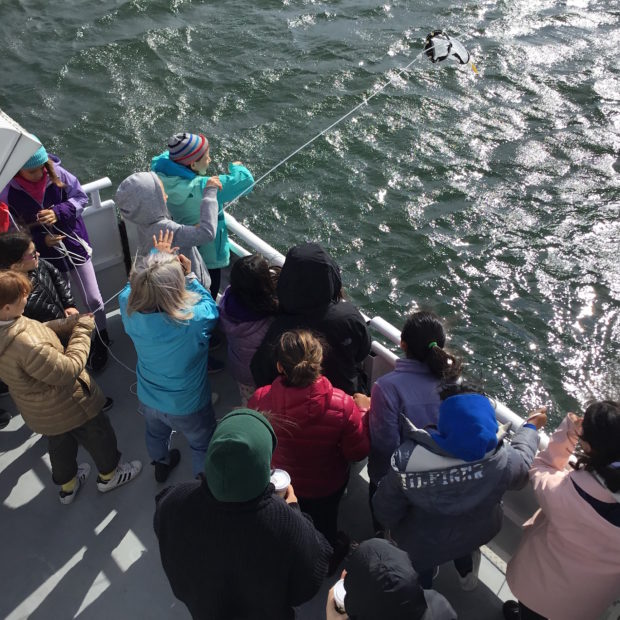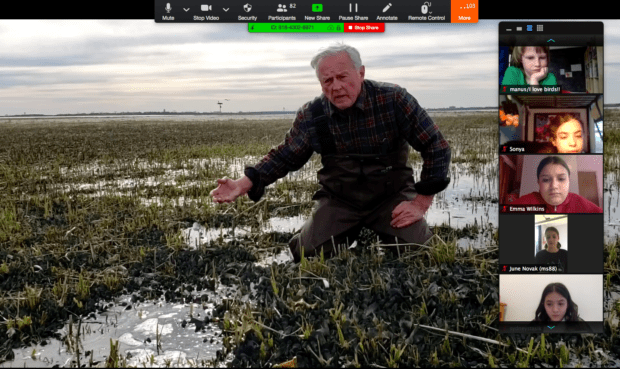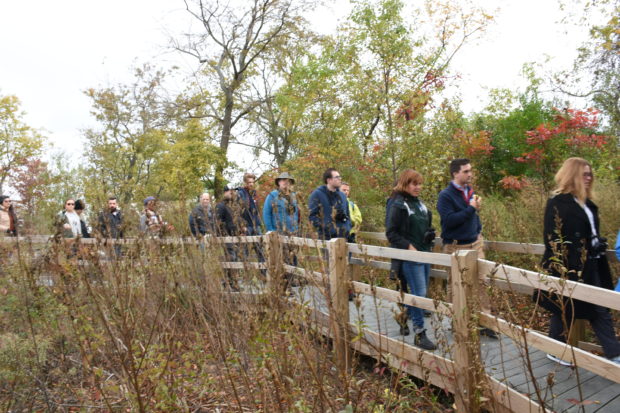We have much more to do and your continued support is needed now more than ever.
NYC Students Learn How to Build a Climate Resilient Future
This year—2020—will rank among the hottest in recorded history. Floods, droughts, violent hurricanes and apocalyptic wildfires are ravaging communities and disproportionately threatening already vulnerable human and wildlife populations. Coastal areas are particularly at risk. Many of New York City’s historic neighborhoods could be submerged by 2100, as Antarctic glaciers destabilize and melt more quickly. An educated citizenry will be needed to implement the sweeping societal changes necessary to adapt to a rapidly changing world.
In late 2019, the United Nations urged all member countries to include climate change in school curricula as a key strategy to realize one of the main goals of the Paris Climate Agreement—keeping global temperature rise to 1.5 degrees Celsius.
Climate education is vital and is supported by a majority of U.S. parents, teachers and students. But a majority of teachers aren’t teaching it, and 55% aren’t even talking about it. As Miyo McGinn wrote in Grist this year, most American kids graduate high school “without any formal education about a crisis that is already harming their communities and fundamentally reshaping life on Earth.”
The National Wildlife Federation is trying to change that by providing quality curricula and programs that advance climate literacy. The Resilient Schools Consortium (RiSC™) program was first launched in 2017 in six New York City public schools by Brooklyn College, the National Wildlife Federation, and partners with funding from the National Oceanic and Atmospheric Administration.
Understanding Place

In the fall of 2019, school-based RiSC teams took to the waters of Jamaica Bay – New York City’s estuary – aboard the American Princess, a 95-foot whale-watching vessel. With the National Wildlife Federation’s educational partner Bioboat, students learned about their city’s coastal history and geography. They learned how intact spartina grass and oyster reef ecosystems contribute to coastal resilience. With binoculars, they observed rip rap – the human-placed rocks or other materials used to armor the shoreline against erosion. They launched plankton tows, examined water samples under microscopes, and conducted water quality tests. Touch tanks filled with spartina, crabs and mussels allowed them to observe the plants and animals inhabiting Jamaica Bay and measure the bay’s biodiversity.
Urban Street Trees and Heat Equity
In mid-November, with Trees New York, students learned about the important role of trees in absorbing carbon from the atmosphere, filtering pollutants, providing habitat for wildlife and shade to cool urban neighborhoods. Each year, over 100 New Yorkers die from heat-related causes because they live in heat-trapping “fenceline communities” with little green space; low-income and black and brown communities are most impacted by extreme heat due to historic environmental racism and disinvestment in their neighborhoods. With many RiSC schools located in heat vulnerable neighborhoods, students took action by planting native trees on their school campuses.

Public Speaking Training
We wanted students to share their newfound learning with peers and family members. Research shows that people prioritize what they talk about. But a mere 9% of Americans talk about climate change often; a majority rarely or never talk about it. Public speaking training sessions with Kid Power Academy got students talking about climate change and helped boost their confidence and communication skills, especially during community workshops held at their respective schools.
COVID-19: A Lesson in Resilience
In March of 2020, National Wildlife Federation staff and partners were planning culminating boat excursions and dune plantings at local beaches. Then the COVID-19 pandemic hit. New York City schools were closed on March 15th and everything changed. Families were hit hard. Jobs and lives were lost. After consulting with teachers and partners about their personal health and morale, and that of their students and families, we resolved to finish the school year together. Bi-weekly check-ins with teachers would provide an important space to share feelings.
The National Wildlife Federation pivoted to provide virtual field trip experiences to replace planned in-person activities. Through a mix of in-person and pre-recorded videos from American Littoral Society, students “visited” Jamaica Bay’s marshes, “witnessed” dune grass planting at a local beach, and “attended” a backyard garden tour. They revisited heat equity with Trees New York. To end the year, the National Wildlife Federation mailed gardening kits to RiSC families. These included native wildflower seeds, growing media and instructions for germinating seedlings at home that could be transplanted into street tree beds in the summer.

COVID-19 created an urgent need to teach students about resilience – how to adapt and be flexible in the face of tragedy, disruption, and uncertainty. The pandemic taught us all how to slow down, grow from the experience, and examine the harmful systems that got us here.
After school ended, several RiSC students continued advocating for climate action and racial justice. Some joined the National Wildlife Federation’s Climate and Resilience Education Task Force to help expand climate education in New York State.
Climate change, COVID-19, racial injustice, economic inequality, and environmental destruction are converging to create unprecedented challenges for current and future generations. We need unprecedented investments in climate education, green jobs training and innovative technologies to match the scale of the problems we face. We’ll need to empower an army of informed decision-makers to help build a healthier, more equitable and resilient society, if humans and wildlife are to survive.

How You Can Help
To support the RiSC program, contact Jennifer Parkos at parkosj@nwf.org
The RiSC curriculum and additional program resources are available at www.riscnyc.org.
Good news: the National Oceanic and Atmospheric Administration has renewed our grant for another three years of RiSC programming (2020-2023) and the Federal Emergency Management Agency has renewed a one-year grant. We want to extend our deepest gratitude to our funders as well as to our partner schools, organizations, and advisors:
- American Littoral Society
- Coney Island Beautification Project
- New York Sea Grant
- Knology (Evaluators)
- Science and Resilience Institute at Jamaica Bay (SRIJB)
- Dr. Lise Van Susteren
- NYC Department of Education and the following NYC Eco-Schools:
- IS 228 David Boody (228 Avenue S, Brooklyn, NY 11223)
- MS 88 Peter Rouget (544 7th Avenue, Brooklyn, NY 11215)
- JHS 223 The Montauk School (4200 16th Avenue, Brooklyn, NY 11204)
- Rachel Carson High School for Coastal Studies (521 West Avenue, Brooklyn, NY 11224)
- John Dewey High School (50 Avenue X, Brooklyn, NY 11223)
- IS 303 Herbert S. Eisenberg (501 West Avenue, Brooklyn, NY 11224)
- Abraham Lincoln High School (2800 Ocean Parkway, Brooklyn, NY 11235)
- IS 288 Shirley Tanyhill (2950 West 25th Street, Brooklyn, NY 11224)






















